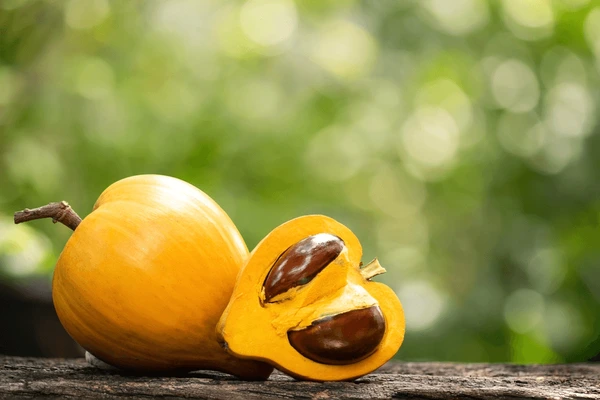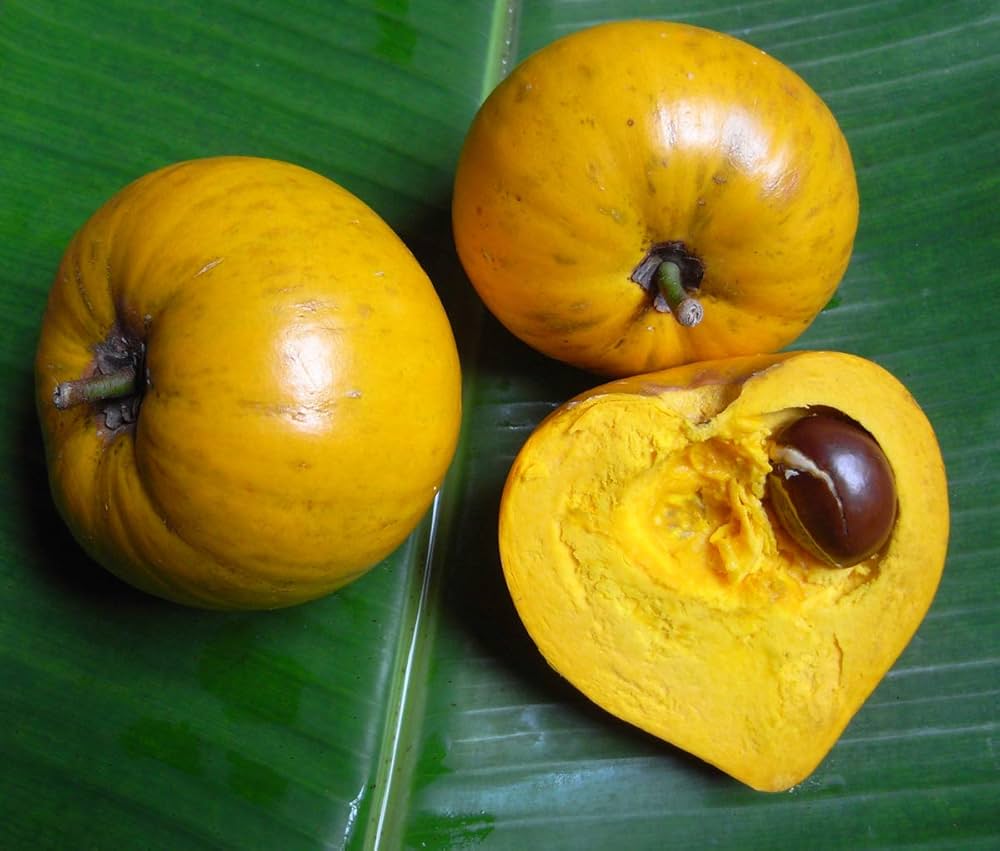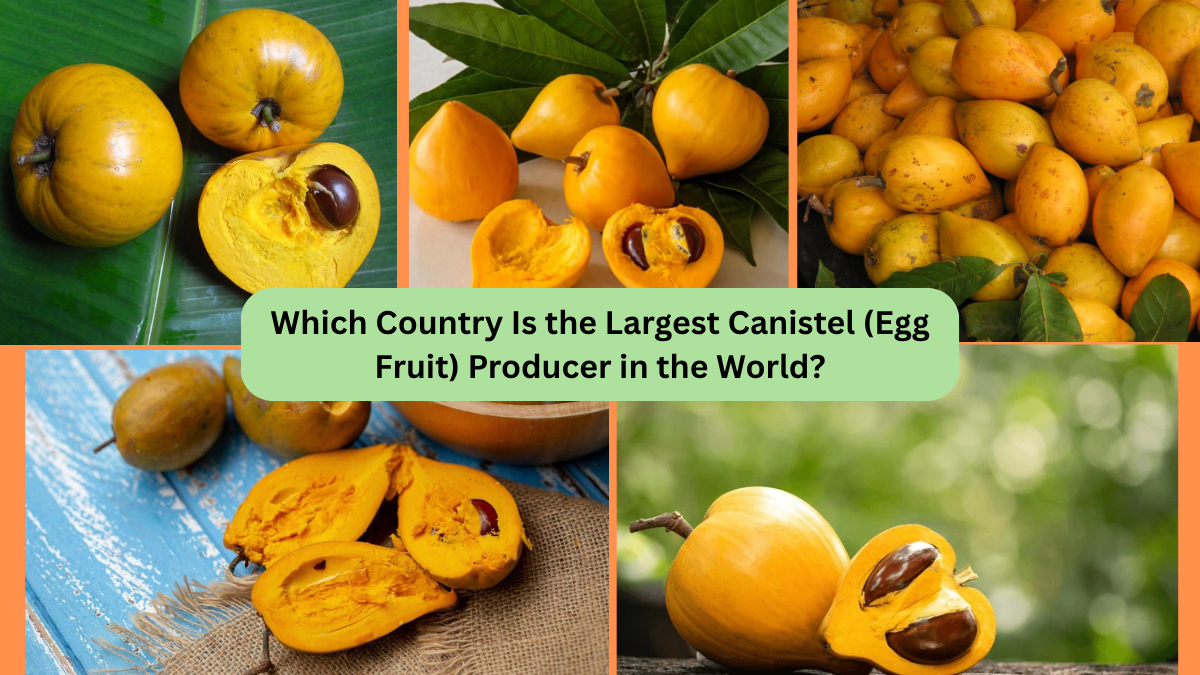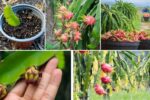The world of exotic tropical fruits offers an incredible range of flavors, textures, and nutritional benefits — and among these lesser-known treasures is the Canistel, commonly called the Egg Fruit. With its rich, sweet flavor and custard-like texture, Canistel is cherished in many parts of Central America, the Caribbean, and Southeast Asia. But which nation leads the world in producing this unique fruit? In this article, we’ll explore which country is the largest Canistel (Egg Fruit) producer in the world, along with fascinating insights about its origin, cultural significance, cultivation, nutritional value, and global market potential.
What is Canistel (Egg Fruit)?

Canistel (Pouteria campechiana) is a tropical fruit belonging to the Sapotaceae family, the same family as mamey sapote and sapodilla. It is native to southern Mexico, Belize, and Guatemala but has spread widely to other tropical regions around the world. The fruit earned the nickname “Egg Fruit” because its vibrant yellow flesh resembles the texture and color of a cooked egg yolk.
- Scientific Name: Pouteria campechiana
- Common Names: Canistel, Egg Fruit, Yellow Sapote, Ti-es (in the Philippines), Zapote Amarillo (in Spanish-speaking regions)
- Native Region: Central America and southern Mexico
- Uses: Eaten fresh, used in milkshakes, ice cream, custards, and jams
When fully ripe, Canistel has a sweet, musky aroma and a rich, custardy flavor, often described as a blend of sweet potato, pumpkin, and mango.
Which Country Is the Largest Canistel (Egg Fruit) Producer in the World?
Mexico holds the distinction of being the largest Canistel (Egg Fruit) producer in the world. The fruit’s origins trace back to southern Mexico and neighboring Central American countries, and Mexico has maintained its status as the leading cultivator, both for domestic consumption and export.
Why Mexico?

Several factors explain Mexico’s dominance in Canistel production:
1. Native Habitat
Canistel is indigenous to southern Mexico, where it has grown naturally for centuries. The warm, tropical climate and fertile soils of the region offer ideal conditions for the fruit to flourish.
2. Traditional Cultivation
In rural parts of Mexico, especially in Yucatán, Campeche, Chiapas, Tabasco, and Quintana Roo, Canistel trees are commonly found in home gardens, orchards, and mixed farms.
3. Culinary and Cultural Importance
In Mexico, Canistel is a cherished seasonal fruit, enjoyed fresh or blended into traditional desserts and drinks such as licuados (milkshakes) and atoles (warm, thick drinks made with corn dough or masa).
4. Growing Export Market
Rising global interest in exotic fruits has led to increased demand for Canistel in specialty markets in the United States, Canada, and parts of Europe. Mexico’s proximity to these markets and existing export infrastructure make it a key supplier.
Geographic Distribution of Canistel in Mexico
While Canistel grows in various parts of Mexico, the southern and southeastern states produce the largest quantities due to their warm, humid climates.
Major producing states include:
- Yucatán
- Campeche
- Chiapas
- Tabasco
- Quintana Roo
- Veracruz
The fruit’s harvest season typically runs from November to March, coinciding with the tropical dry season when many other fruits are out of season.
Canistel in Mexican Culture

Though Canistel isn’t as internationally known as mango or papaya, it holds a special place in the culinary traditions of southern Mexico.
- Street Vendors and Markets: In towns and villages, Canistel is commonly sold by local vendors during its harvest season.
- Traditional Recipes: The fruit is often blended into milk-based drinks, ice cream, custards, and puddings.
- Medicinal Uses: In folk medicine, Canistel pulp is believed to aid digestion, relieve respiratory problems, and support healthy vision due to its high beta-carotene content.
Is Canistel Grown Outside Mexico?
Yes — while Mexico leads in production, Canistel is also cultivated in several other tropical countries, though typically on a smaller scale.
Other Notable Canistel Producers:
- Belize and Guatemala: Native regions with local consumption.
- Cuba: Grown in home gardens and mixed orchards.
- Philippines: Known as Ti-es, it’s popular in local markets.
- Vietnam, Thailand, and Malaysia: Valued in home gardens and small commercial orchards.
- United States (Florida and Hawaii): Limited cultivation, primarily for specialty markets and personal use.
However, none of these countries match Mexico’s production volume or commercial reach.
Global Market and Export Demand

Canistel remains a niche product in global fruit markets, largely due to its short shelf life and delicate texture. However, with the growing popularity of tropical and exotic fruits in international cuisine and health food markets, demand for Canistel is gradually increasing.
Key export markets for Mexican Canistel include:
- United States (especially Florida, Texas, and California)
- Canada
- Caribbean islands
- Specialty grocers in Europe
Canistel is also finding its way into gourmet restaurants and natural food stores in these markets, where it’s featured in smoothies, vegan desserts, and tropical fruit blends.
Nutritional and Health Benefits
One of the reasons Canistel is gaining attention is its impressive nutritional profile.
Key nutrients include:
- Vitamin A (Beta-Carotene): Promotes healthy vision and skin.
- Vitamin C: Boosts the immune system and supports collagen production.
- Dietary Fiber: Aids digestion and helps regulate blood sugar.
- Niacin (Vitamin B3): Supports metabolism and cardiovascular health.
- Iron and Calcium: Beneficial for bone health and blood production.
Health benefits:
- Supports eye health due to high beta-carotene content.
- Acts as a natural source of antioxidants.
- Aids in digestion with its dietary fiber.
- Provides sustained energy as a low-fat, high-carb tropical fruit.
Challenges in Canistel Production

Despite its appeal, Canistel cultivation faces several challenges:
1. Short Shelf Life
Ripe Canistel spoils quickly, making long-distance transport difficult without proper refrigeration and handling.
2. Limited Commercial Farming
Most Canistel is grown in small-scale orchards or backyard gardens, with few large-scale commercial plantations.
3. Lack of Market Awareness
Even in producing countries, Canistel remains relatively unknown outside regional markets.
Government and Agricultural Initiatives in Mexico
To address these challenges and promote indigenous fruit varieties, the Mexican government and agricultural cooperatives have initiated several programs:
- Farmer Training Workshops: Teaching improved cultivation, grafting, and pest management techniques.
- Agrotourism Campaigns: Promoting Canistel orchards as part of eco-tourism experiences.
- Market Development Programs: Supporting small farmers in accessing domestic and export markets.
These initiatives aim to preserve native fruit varieties while providing economic opportunities for rural communities.
Future Prospects for Canistel
With increased interest in exotic fruits and functional foods, Canistel has promising future potential:
- Product Development: Creation of Canistel-based jams, dried fruits, and ice creams.
- Health Food Markets: Positioning Canistel as a vitamin-rich, natural alternative for smoothies and vegan desserts.
- Export Expansion: Improved cold storage and shipping methods could open new markets in Europe and Asia.
Final Thoughts
In conclusion, Mexico proudly holds the title of the largest Canistel (Egg Fruit) producer in the world, thanks to its native status, favorable climate, traditional farming practices, and growing international demand. While other countries in Central America, the Caribbean, and Southeast Asia also produce Canistel, none match Mexico’s production scale, cultural connection, and market reach.
As health-conscious consumers and chefs worldwide continue to explore new flavors and superfoods, Canistel’s bright yellow flesh and custardy sweetness are poised to earn it a deserved place among the world’s most beloved tropical fruits.





